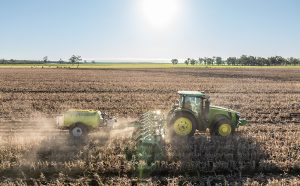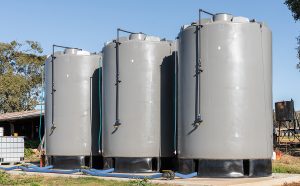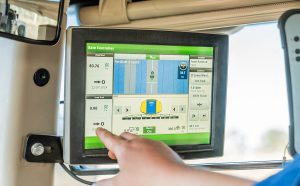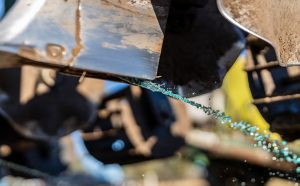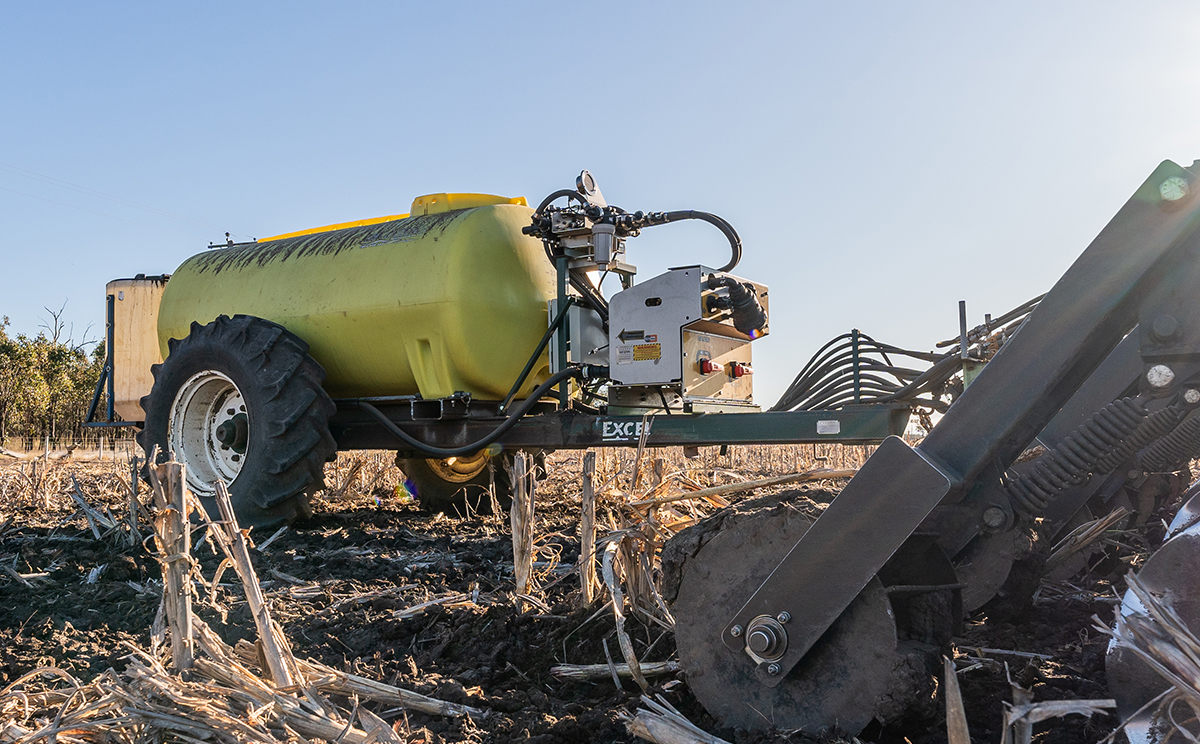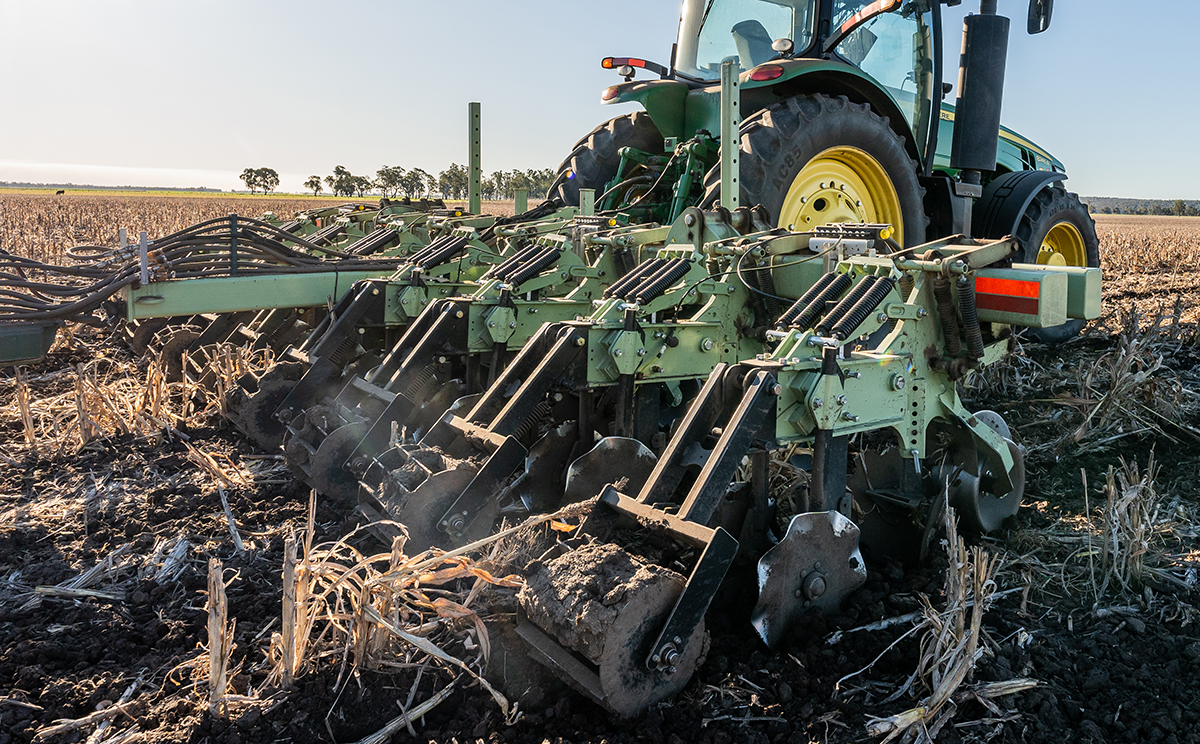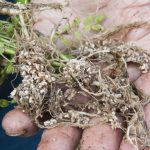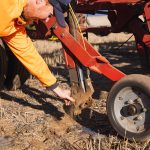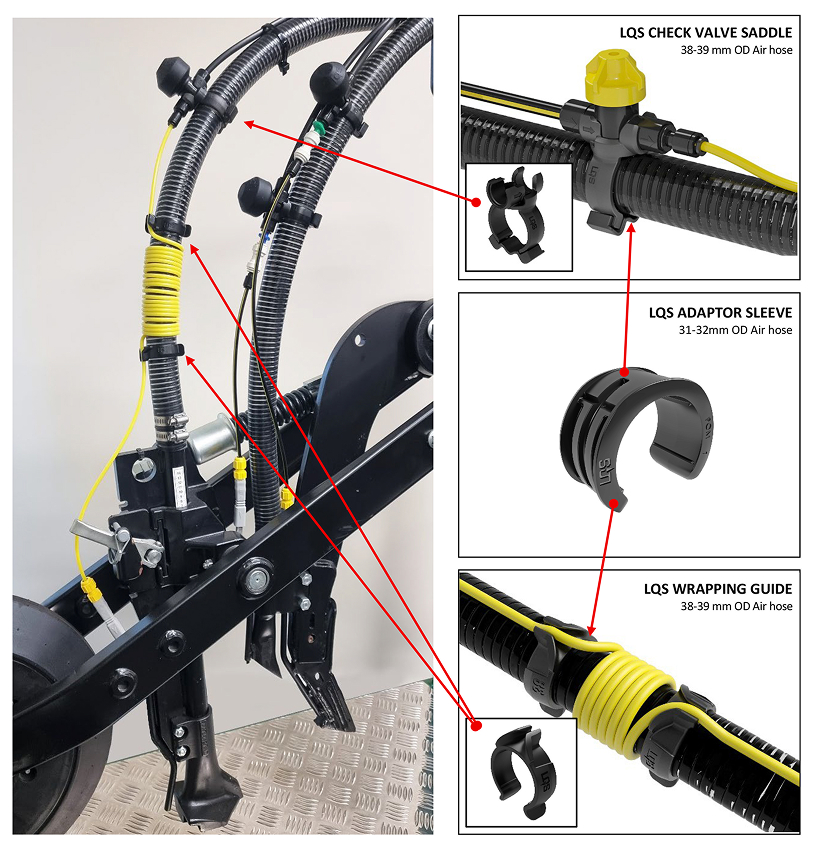Liquid injection unlocks greater flexibility and safety.
Since adopting a liquid injection system one QLD grain growing family now has greater control over nitrogen applications
Prior to 2023, Jacob Kratzmann depended on anhydrous ammonia to meet his crops’ nitrogen needs. However, with the discontinuation of anhydrous ammonia production for agriculture, he switched to using UAN for his fertiliser requirements. Alongside this product change, the Kratzmann family adopted a direct liquid injection system—which Jacob says has given them greater flexibility in their cropping program.
| ABOUT |
|---|
- WHO: Jacob, Glenn and Colleen Kratzmannn
- LOCATION: Clifton, Queensland
- INPUTS: UAN
- PROPERTY: Summer and winter cropping operation
- EQUIPMENT: Liquid Systems (SA) LQS120 Module & 6 Manifold Section Control Kit mounted on the trailing cart. Stacker Distribution is set on 2 different implements.
| KEY OUTCOMES |
|---|
- Cost savings & efficiencies with on-farm storage
- Greater flexibility to adapt to seasonal conditions
- Safer nitrogen use
- Reduced Nitrogen overlap
“We weren’t looking to change but when we couldn’t get Big N anymore our options were either liquid fertiliser or urea. We didn’t want to go back to using urea. Liquid N is a little more expensive but in terms of ease of use for transporting and filling, it stacked up,” Jacob said.
Jacob and his parents Glenn and Colleen run a cropping operation at Clifton, QLD, where they grow predominantly summer crops such as sorghum, together with some winter cereals.
A Precision-Ready System Built for Multi-Implement Use
Their transition to liquid injection began in July 2023 when they purchased a Liquids Systems LQS120 Module. They installed the pump module and a liquid 6 Section Control kit on their existing trailing cart and replaced the old gas tank with a 3000 Lt poly tank. This can be switched to trail behind an Excel single disc planter and an Orthman 1tRIPr Strip-Till implement for cropping sorghum, wheat, and barley. Each tillage implement has stacker manifolds and delivery lines mounted to allow the liquid cart to be switched easily between sowing and tillage equipment.
The Kratzmann’s found the move to liquid injection relatively simple. Before purchasing the Liquid System, Jacob worked in precision agriculture and was familiar with the adaptability of Liquid Systems (SA)equipment.
Backed with Good Support
“I was familiar with Liquid Systems – I had seen a set-up in person and also knew of other growers who were using them. It was a significant investment but I had some ideas on how we might set one up and I knew that Liquid Systems offered good support and foolproof user manuals- it gave us the confidence to go down that path,” Jacob explained.
Like any major change, the Kratsmann’s switch to liquids wasn’t without its hurdles. They initially experienced pressure issues while applying high UAN rates with their strip-till. However, the Liquids Systems customer support helped troubleshoot the problem.
“The LQS team replicated our setup in their test facility and figured out that we needed larger lines to regulate pressure. Their support saved us days of trial and error,” Jacob said.
Dialling In the Right Nitrogen Rate
Finding the right Nitrogen rate to suit their soils has also meant some trial and error. In their first season, the Kratzmann’s applied UAN at rates of 100-300 L/ha pre-plant, using lower rates (100L/ha) for winter crops. For summer crops higher rates for sowing sorghum into long fallow. 150 L/ha of UAN is applied using the strip till around Feb/March for the summer crop which is sown in October/November. They have found this timing works well to manage seedbed, moisture and residual herbicides for planting. The single disc is used to pre-apply N for the winter crop around February/March.
“In terms of rates it has been a bit of trial and error. There is limited knowledge around UAN use in our area and we certainly didn’t apply enough Nitrogen in our first year. It’s expensive and we were trying to use it efficiently. We applied 150 L/ha in winter crop 2024, 100L/ha in 2025 season and they have performed well but every season we will adapt our rates depending on season, previous crops and soil tests .“ Jacob explained.
Precision Control: Less Waste, Better Placement, Smarter Decisions
Even early in their transition, Jacob has seen clear gains in efficiency and safety compared to their former anhydrous ammonia system.
Even early in their transition, Jacob has seen clear gains in efficiency and safety. The LQS Section control, run through a GreenStar controller, has reduced overlap and waste—particularly important in paddocks shaped around rivers and lagoons. “We identified that even with small savings in fertiliser, over time we could justify the investment”, says Jacob.
Section control means less overlap and less waste. We identified that even with small savings in fertiliser, we could justify the investment over time.
Bulk Storage: The Operational Game-Changer
The installation of three 16000 L storage tanks, which are plumbed together to accommodate liquid UAN has proven to be one of the key efficiency improvements.
“With the storage tanks, we can get 29000 L of UAN delivered at a time. It’s enough to keep us fertilising without waiting for the next delivery. We get lots of comments from the delivery drivers about how easy it is to use,” Jacob explained.
The tanks have also provided greater control over cropping operations and improved safety.
Flexibility That Pays — Responding Fast to Seasonal Breaks
“With the gas we were relying on nurse tanks getting dropped out to us. Those tanks often had to be shifted and with lots of taps and hoses required to fill up for fertilising it was dangerous. We can also keep some UAN on hand going into a period where we think we might want it.” Jacob said.
Think about how you can use the system across multiple implements or for different crop applications. You don’t need a pump on every piece of equipment; set it up to move between applications. Also, think about what you might need in the future so that your system can grow with you as needed.
This flexibility has already paid off enabling them to pivot quickly in response to season conditions. Last year they were able to capitalise on forecast rain and sow a double crop. On the back of a poor winter crop and dry spring, they could quickly apply fertiliser and sow a late sorghum crop.
“We had some liquid on hand so we could get planting without waiting on urea deliveries to take advantage of the rainfront,” Jacob said.
Fast, Safe, One-Person Filling and Easy Cleaning
Jacob considers their filling setup, which includes a flattop trailer equipped with a 11000-litre water tank, to be one of the best aspects of their upgrade. It can be easily moved between paddocks, allowing them to refill and resume fertilising in approximately 10 minutes.
“Refilling is now a one-man job- there is less mucking around and more time in the tractor seat, “he said.
A 250L flush tank on the back of the trailer ensures nightly flushing is quick and easy, preventing corrosion and reducing maintenance down time.
It’s a simple exercise to make sure you’re not leaving UAN in the lines – you just swap over with a couple of taps and choose a function – you can do it on your own easily and it’s important for reducing downtime for maintenance.
Advice to Other Growers: Prioritise Flexibility and Future Growth
Jacob is happy to recommend Liquid Systems and suggests that others considering a similar transition to focus on setup flexibility.
“Think about how you can use the system across multiple implements or for different crop applications. You don’t need a pump on every piece of equipment; set it up to move between applications. Also, think about what you might need in the future so that your system can grow with you as needed. “ he advises.
This strategy has helped Jacob’s family maximise the value of their investment without duplicating equipment.



